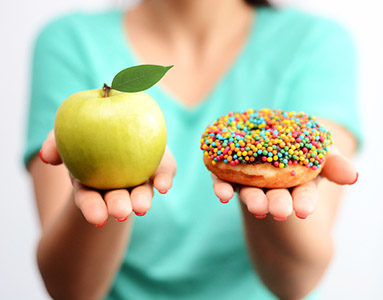Dr Amber Johnston – a clinical psychologist specialising in neuropsychology reveals how we have learnt to respond to threats through previous experiences and that stress responses are a learned trait
The brain has evolved to recognise and respond to threats, often before we’re consciously aware. The stress response is the alarm and preparation to get us out of immediate danger quickly.
But how does our brain know what to identify as dangerous to begin with?
Our brain has a fantastic capacity to learn. By childhood, we have our greatest number of neurons available for learning, and through a process of pruning, neurons connect in web-like fashion to create strong pathways of association as they encounter new things in their environment.
A child associates the sound of ‘dog’ with the furry brown creature licking its face. ‘Dog’ then becomes associated with the joyful feelings of delight, interacting with something fuzzy, playful and warm. This child may reinforce these pathways over the course of his life, developing a strong association as an adult with dogs being safe, comforting companions.
The idea of learning paired associations is paramount when thinking of how our stress can be triggered. Much of what our body senses will go through a channel of neurological processing that involves unconscious search of our memory for previous experience that then guides our next movement.
Our brain is a predictive machine. Looking at brain imaging scans, we can see that when presented with visual images, our brains can light up areas that will likely be needed to engage with that image.
all the lessons we have learned in the past will guide our readiness for each next future step
For instance, when seeing a cup, we can see action potential in the area representing our arm movement, priming it for action in case we decide to pick up the cup. On a wider scale, this means that our brain is always sensing the environment to determine what might be needed from us to navigate it, and then it primes us for action, without us necessarily even being aware.
All of this prediction comes from our previous experiences, so all the lessons we have learned in the past will guide our readiness for each next future step, including when there may be threat.
This priming and associative learning explains why specific, often abstract or ‘time-shifted stresses (like agonising thoughts about things in the past or in the future) trigger us.
Because of your previous experiences, you may find yourself in a heightened stress state over the fact that you and your partner will be late for a dinner date, where your partner is cool as a cucumber taking his/her merry time – infuriating!
Your stress reactions are not aligned due to individual learnings about lateness, its repercussions, and the rewards of punctuality. Your partner has learned distinctive messages to you regarding what’s stressful, including the stress of arriving to a social event without looking fabulous, hence the need for those extra ten minutes with the hair straightener.

Big T’s vs Little T’s
We are clear that major stress reactions can develop from significant, traumatic life events. We know these events as ‘Big T’s’, as these are situations and scenarios that often threaten one’s physical and emotional safety in a way that is terrifying and life threatening.
With diagnoses such as PTSD (Post Traumatic Stress Disorder), the stress response can be turned on and the brain becomes hyperactive in its focus on threat, in a futile attempt to prevent any further threat to life, even long after the threat has passed.
PTSD is treatable and focuses on this overactive stress response’s influence on brain learning and pathways. Big T’s are particularly influential during childhood development.
Adverse Childhood Experiences (ACE’s) have been identified as specific, challenging life events that children may experience when vulnerable in their development (physical or emotion abuse or neglect, parental alcoholism, sexual abuse, parental incarceration); ACE’s are linked with adult alterations in brain development towards an overactive stress response, increased risk for chronic health diseases, and emotional and substance abuse problems.
Specific therapy is beneficial to those with Big T’s or ACE’s, aiding in trauma resolution and stress response reduction. The heightened stress response was learned in these dangerous environments as a protective strategy to keep someone safe, and now it’s about the brain relearning the new wellbeing messages they can create in their current, safe adult environment.
the little stresses and messages that we have learned over the years, particularly in childhood, when emotional needs were not met
But the majority of my clients come in to my office saying, ‘I don’t have any major traumas in my life, nothing bad has happened to me, so why do I still feel like this?’.
I want to introduce the concept of the little T’s, the little stresses and messages that we have learned over the years, particularly in childhood, when emotional needs were not met. They now direct what we expect of ourselves and the world around us and are highly personal, with us not always fully aware of them.
In my clinical experience, it is the little T’s that drive the greatest amount of personal stress, demanding that we live up to our own specific expectations, and creating harsh punishment when we fail to meet our standards.
For the man waiting for his tardy wife to get ready, his brain, in a split second with a well-worn neuronal pathway, may be unconsciously calling upon the times that his disapproving father lectured him in the car for being unprepared for school.
The wife’s brain may have a flash of the experiences walking into a crowded school cafeteria with disapproving stares at her from unpleasant peers.
The little T’s guide our current behaviour and often are the greatest source of distress in our daily experience, activating stress responses that we then must navigate, but paradoxically in a way that makes us believe we shouldn’t really be flustered. Nothing that bad is happening. Why am I not handling this?
In the last of the series, I will approach the topic of coping with stress and little T’s, a primary driver of our overactive stress response. Understanding and feeling compassion for these little triggers will allow us the space to finally address these stresses to move forward.
Stay tuned for the next article in this series next Thursday.
Dr Amber Johnston is a clinical psychologist specialising in neuropsychology (healthymindpsychology.co.uk)
Like this article? Sign up to our newsletter to get more articles like this delivered straight to your inbox.




























































































































